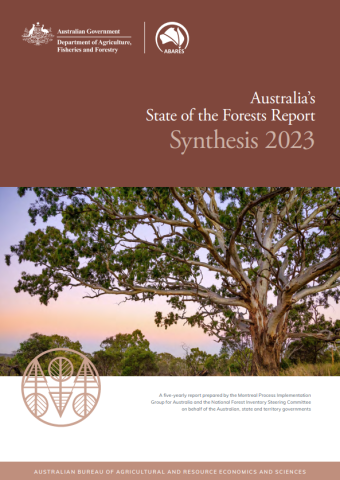Australia’s State of the Forests Report: Synthesis 2023 [7 MB] presents a summary of the best-available data for Australia’s 44 indicators of sustainable forest management established under the Montréal Process. Covering biophysical, conservation, social, cultural and economic values of forests, it includes information from 25 indicators most recently published in 2023 and 2024 on the Forests Australia website, and from Australia’s State of the Forests Report 2018 for the remaining 19 indicators (to be updated in 2025). This is the second edition of Australia's State of the Forests Report: Synthesis 2023. It contains minor edits made to the first edition (as listed here).
Australia’s State of the Forests Report is now a web-based product via rolling updates to the 44 indicators based on the availability of new data. This enables a progressive update and publication of indicators as new data become available through the Australia’s State of the Forests Report reporting on the Forests Australia website, and more frequently than the previous five-yearly reporting process. This new national reporting process also includes the release of a five-yearly Australia’s State of the Forests Report: Synthesis. Australia’s State of the Forests Report: Synthesis 2023 is the first such product. This approach replaces the previous process which updated and published all indicators in a single report (hardcopy and online versions).
The date-stamp of the indicator data reported in Australia’s State of the Forests Report: Synthesis 2023 varies, but the underlying forest area is mapped as at June 2021, which is consistent with the date of other data reported unless otherwise stated. All data are assembled in the National Forest Inventory, ABARES, unless otherwise stated.
Australia’s State of the Forests Report: Synthesis 2023 is available as an accessible PDF [7 MB].
The list of contributors to Australia’s State of the Forests Report can be found here.

